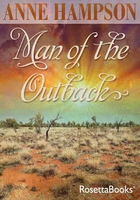The Palaeolithic Period: The Mythology of the Hunters (c. 20000 to 8000 BCE)
The period in which human beings completed their biological evolution is one of the longest and most formative in their history. It was in many ways a frightening and desperate time. These early people had not yet developed agriculture. They could not grow their own food, but depended entirely on hunting and gathering. Mythology was as essential to their survival as the hunting weapons and skills that they evolved in order to kill their prey and achieve a degree of control over their environment. Like the Neanderthals, Palaeolithic men and women could leave no written record of their myths, but these stories proved to be so crucial to the way that human beings understood themselves and their predicament that they survived, in fragmented form, in the mythologies of later literate cultures. We can also learn a great deal about the experience and preoccupations of these primal human beings from such indigenous peoples as the Pygmies or the Australian aborigines who, like the people of the Palaeolithic age, live in hunting societies and have not undergone an agricultural revolution.
It is natural for these indigenous peoples to think in terms of myth and symbol because, ethnologists and anthropologists tell us, they are highly conscious of a spiritual dimension in their daily lives. The experience of what we call the sacred or the divine has become at best a distant reality to men and women in industrialised, urban societies, but to the Australians, for example, it is not only self-evident but more real than the material world. 'Dreamtime'–which Australians experience in sleep and in moments of vision–is timeless and 'everywhen'. It forms a stable backdrop to ordinary life, which is dominated by death, flux, the endless succession of events, and the cycle of the seasons. Dreamtime is inhabited by the Ancestors–powerful, archetypal beings who taught humans the skills that are essential to their lives, such as hunting, war, sex, weaving and basket-making. These are, therefore, not profane but sacred activities, which bring mortal men and women into contact with Dreamtime. When an Australian goes hunting, for example, he models his behaviour so closely on that of the First Hunter that he feels totally at one with him, caught up in that more powerful archetypal world. It is only when he experiences this mystical unity with Dreamtime that his life has meaning. Afterwards, he falls away from that primal richness and back into the world of time, which, he fears, will devour him and reduce all that he does to nothingness.[3]
The spiritual world is such an immediate and compelling reality that, the indigenous peoples believe, it must once have been more accessible to human beings. In every culture, we find the myth of a lost paradise, in which humans lived in close and daily contact with the divine. They were immortal, and lived in harmony with one another, with animals and with nature. At the centre of the world there was a tree, a mountain, or a pole, linking earth and heaven, which people could easily climb to reach the realm of the gods. Then there was a catastrophe: the mountain collapsed, the tree was cut down, and it became more difficult to reach heaven. The story of the Golden Age, a very early and almost universal myth, was never intended to be historical. It springs from a strong experience of the sacred that is natural to human beings, and expresses their tantalising sense of a reality that is almost tangible and only just out of reach. Most of the religions and mythologies of archaic societies are imbued with longing for the lost paradise.[4] The myth was not simply an exercise in nostalgia, however. Its primary purpose was to show people how they could return to this archetypal world, not only in moments of visionary rapture but in the regular duties of their daily lives.
Today we separate the religious from the secular. This would have been incomprehensible to the Palaeolithic hunters, for whom nothing was profane. Everything they saw or experienced was transparent to its counterpart in the divine world. Anything, however lowly, could embody the sacred.[5] Everything they did was a sacrament that put them in touch with the gods. The most ordinary actions were ceremonies that enabled mortal beings to participate in the timeless world of 'everywhen'. For us moderns, a symbol is essentially separate from the unseen reality to which it directs our attention, but the Greek symballein means 'to throw together': two hitherto disparate objects become inseparable–like gin and tonic in a cocktail. When you contemplated any earthly object, you were therefore in the presence of its heavenly counterpart. This sense of participation in the divine was essential to the mythical worldview: the purpose of a myth was to make people more fully conscious of the spiritual dimension that surrounded them on all sides and was a natural part of life.
The earliest mythologies taught people to see through the tangible world to a reality that seemed to embody something else.[6] But this required no leap of faith, because at this stage there seemed to be no metaphysical gulf between the sacred and the profane. When these early people looked at a stone, they did not see an inert, unpromising rock. It embodied strength, permanence, solidity and an absolute mode of being that was quite different from the vulnerable human state. Its very otherness made it holy. A stone was a common hierophany–revelation of the sacred–in the ancient world. Again, a tree, which had the power effortlessly to renew itself, incarnated and made visible a miraculous vitality denied to mortal men and women. When they watched the waning and waxing of the moon, people saw yet another instance of sacred powers of regeneration,[7] evidence of a law that was harsh and merciful, and frightening as well as consoling. Trees, stones and heavenly bodies were never objects of worship in themselves but were revered because they were epiphanies of a hidden force that could be seen powerfully at work in all natural phenomena, giving people intimations of another, more potent reality.
Some of the very earliest myths, probably dating back to the Palaeolithic period, were associated with the sky, which seems to have given people their first notion of the divine. When they gazed at the sky–infinite, remote and existing quite apart from their puny lives–people had a religious experience.[8] The sky towered above them, inconceivably immense, inaccessible and eternal. It was the very essence of transcendence and otherness. Human beings could do nothing to affect it. The endless drama of its thunderbolts, eclipses, storms, sunsets, rainbows and meteors spoke of another endlessly active dimension, which had a dynamic life of its own. Contemplating the sky filled people with dread and delight, with awe and fear. The sky attracted them and repelled them. It was by its very nature numinous, in the way described by the great historian of religion, Rudolf Otto. In itself, without any imaginary deity behind it, the sky was mysterium tremendum, terribile et fascinans.[9]
This introduces us to an essential element of both the mythical and the religious consciousness. In our sceptical age, it is often assumed that people are religious because they want something from the gods they worship. They are trying to get the Powers That Be on their side. They want long life, freedom from sickness, and immortality, and think that the gods can be persuaded to grant them these favours. But in fact this very early hierophany shows that worship does not necessarily have a self-serving agenda. People did not want anything from the sky, and knew perfectly well that they could not affect it in any way. From the very earliest times, we have experienced our world as profoundly mysterious; it holds us in an attitude of awe and wonder, which is the essence of worship. Later the people of Israel would use the word qaddosh to denote the sacred. It was 'separate, other'. The experience of pure transcendence was in itself profoundly satisfying. It gave people an ecstatic experience by making them aware of an existence that utterly transcended their own, and lifted them emotionally and imaginatively beyond their own limited circumstances. It was inconceivable that the sky could be 'persuaded' to do the will of poor, weak human beings.
The sky would continue to be a symbol of the sacred long after the Palaeolithic period. But a very early development showed that mythology would fail if it spoke of a reality that was too transcendent. If a myth does not enable people to participate in the sacred in some way, it becomes remote and fades from their consciousness. At some point–we do not know exactly when this happened–people in various far-flung parts of the world began to personify the sky. They started to tell stories about a 'Sky God' or 'High God', who had single-handedly created heaven and earth out of nothing. This primitive monotheism almost certainly dates back to the Palaeolithic period. Before they began to worship a number of deities, people in many parts of the world acknowledged only one Supreme God, who had created the world and governed human affairs from afar.
Nearly every pantheon has its Sky God. Anthropologists have also found Him among such tribal peoples as the Pygmies, the Australians and the Fuegians.[10] He is First Cause of all things and Ruler of heaven and earth. He is never represented by images and has no shrine or priest, because he is too exalted for a human cult. The people yearn toward their High God in prayer, believe that he is watching over them and will punish wrongdoing. Yet he is absent from their daily lives. The tribesmen say that he is inexpressible and can have no dealings with the world of men. They may turn to him in a crisis, but he is otherwise absent and is often said to have 'gone away', or 'disappeared'.
The Sky Gods of the ancient Mesopotamians, Vedic Indians, Greeks and Canaanites all dwindled in this way. In all the mythology of all these peoples, the High God is at best a shadowy, powerless figure, marginal to the divine pantheon, and more dynamic, interesting and accessible deities, such as Indra, Enlil and Baal, had come to the fore. There are stories that explain how the High God was deposed: Ouranos, the Sky God of the Greeks, for example, was actually castrated by his son Kronos, in a myth that horribly illustrates the impotence of these Creators, who were so removed from the ordinary lives of human beings that they had become peripheral. People experienced the sacred power of Baal in every rainstorm; they felt the force of Indra every time they were possessed by the transcendent fury of battle. But the old Sky Gods did not touch people's lives at all. This very early development makes it clear that mythology will not succeed if it concentrates on the supernatural; it will only remain vital if it is primarily concerned with humanity.
The fate of the Sky God reminds us of another popular misconception. It is often assumed that the early myths gave people in the pre-scientific world information about the origin of the cosmos. The story of the Sky God represented exactly this type of speculation, but the myth was a failure, because it did not touch people's ordinary lives, told them nothing about their human nature and did not help them to solve their perennial problems. The demise of the Sky Gods helps to explain why the Creator God worshipped by Jews, Christians and Muslims has disappeared from the lives of many people in the West. A myth does not impart factual information, but is primarily a guide to behaviour. Its truth will only be revealed if it is put into practice–ritually or ethically. If it is perused as though it were a purely intellectual hypothesis, it becomes remote and incredible.
The High Gods may have been demoted, but the sky never lost its power to remind people of the sacred. Height has remained a mythical symbol of the divine–a relic of Palaeolithic spirituality. In mythology and mysticism, men and women regularly reach for the sky, and devise rituals and techniques of trance and concentration that enable them to put these ascension stories into practice and 'rise' to a 'higher' state of consciousness. Sages claim that they have mounted through the various levels of the celestial world until they reach the divine sphere. Yoga practitioners are said to fly through the air; mystics levitate; prophets climb high mountains and break into a more sublime mode of being.[11] When people aspired towards the transcendence represented by the sky, they felt that they could escape from the frailty of the human condition and pass to what lies beyond. That is why mountains are so often holy in mythology: midway between heaven and earth, they were a place where men such as Moses could meet their god. Myths about flight and ascent have appeared in all cultures, expressing a universal desire for transcendence and liberation from the constraints of the human condition. These myths should not be read literally. When we read of Jesus ascending to heaven, we are not meant to imagine him whirling through the stratosphere. When the Prophet Muhammad flies from Mecca to Jerusalem and then climbs up a ladder to the Divine Throne, we are to understand that he has broken through to a new level of spiritual attainment. When the Prophet Elijah ascends to heaven in a fiery chariot, he has left the frailty of the human condition behind, and passed away into the sacred realm that lies beyond our earthly experience.
Scholars believe that the very first myths of ascent date back to the Palaeolithic period, and that they were associated with the shaman, the chief religious practitioner of hunting societies. The shaman was a master of trance and ecstasy, whose visions and dreams encapsulated the ethos of the hunt, and gave it a spiritual meaning. The hunt was highly dangerous. Hunters would leave their tribe for days at a time, would have to relinquish the security of their cave, and risk their lives to bring food back to their people. But, as we shall see, it was not merely a pragmatic enterprise, but, like all their activities, had a transcendent dimension. The shaman also embarked on a quest, but his was a spiritual expedition. It was thought that he had the power to leave his body and to travel in spirit to the celestial world. When he fell into a trance, he flew through the air and communed with the gods for the sake of his people.
In the Palaeolithic cave shrines of Lascaux in France and Altamira in Spain, we find paintings depicting the hunt; alongside the animals and the huntsmen, there are men wearing bird masks, suggestive of flight, who were probably shamans. Even today, in hunting societies from Siberia to Tierra del Fuego, shamans believe that when they go into a trance they ascend to heaven and speak with the gods, as all humans did long ago in the Golden Age. A shaman is given special training in the techniques of ecstasy. Sometimes he suffers a psychotic breakdown during his adolescence, which represents a severance from his old profane consciousness and the recovery of powers that were given to the very earliest human beings but which have now been lost. In special ritual sessions, the shaman falls into a trance to the accompaniment of drums and dancing. Often he climbs a tree or a post that symbolises the Tree, Mountain or Ladder that once linked heaven and earth.[12] A modern shaman describes his journey through the depths of the earth to heaven in this way:
When the people sing, I dance. I enter the earth. I go in at a place like a place where people drink water. I travel a long way, very far…When I emerge, I am already climbing. I'm climbing threads, the threads that lie over there in the south…and when you arrive at God's place, you make yourself small…You do what you have to do there. Then you return to where everybody is.[13]
Like the dangerous expedition of the hunter, the shaman's quest is a confrontation with death. When he returns to his community his soul is still absent from his body, and he has to be revived by colleagues, who 'take hold of your head and blow about the sides of your face. This is how you manage to be alive again. Friends, if they don't do that to you, you die…you just die and are dead.'[14]
Spiritual flight does not involve a physical journey, but an ecstasy in which the soul is felt to leave the body. There can be no ascent to the highest heaven without a prior descent into the depths of the earth. There can be no new life without death. The themes of this primitive spirituality would recur in the spiritual journeys undertaken by mystics and yogins in all cultures. It is highly significant that these myths and rituals of ascension go back to the earliest period of human history. It means that one of the essential yearnings of humanity is the desire to get 'above' the human state. As soon as human beings had completed the evolutionary process, they found that a longing for transcendence was built into their condition.
Shamans operate only in hunting societies, and animals play an important role in their spirituality. During his training, a modern shaman sometimes lives with animals in the wild. He is supposed to meet an animal, who will instruct him in the secrets of ecstasy, teach him animal language, and become his constant companion. This is not regarded as a regression. In hunting societies, animals are not seen as inferior beings, but have superior wisdom. They know the secrets of longevity and immortality, and, by communing with them, the shaman gains an enhanced life. In the Golden Age, before the fall, it is thought that human beings could talk with animals, and, until he has recovered this prelapsarian skill, a shaman cannot ascend to the divine world.[15] But his journey also has a practical objective. Like the hunter, he brings food to his people. In Greenland, for example, the Eskimos believe that the seals belong to a goddess, who is called the Mistress of Animals. When there is a shortage of game, the shaman is dispatched to appease her and end the famine.[16]
It is likely that the Palaeolithic peoples had similar myths and rites. It is a crucial fact that homo sapiens was also 'the hunter ape', who preyed on other animals, killed and ate them.[17] Palaeolithic mythology also seems to have been characterised by great reverence for the animals that men now felt compelled to kill. Humans were ill-equipped for hunting, because they were weaker and smaller than most of their prey. They had to compensate for this by developing new weapons and techniques. But more problematic was a psychological ambivalence. Anthropologists note that modern indigenous peoples frequently refer to animals or birds as 'peoples' on the same level as themselves. They tell stories about humans becoming animals and vice versa; to kill an animal is to kill a friend, so tribesmen often feel guilt after a successful expedition. Because it is a sacred activity and charged with such high levels of anxiety, hunting is invested with ceremonial solemnity and surrounded with rites and taboos. Before an expedition, a hunter must abstain from sex and keep himself in a state of ritual purity; after the killing, the meat is stripped from the bones, and the skeleton, skull and pelt are carefully laid out in an attempt to reconstruct the animal and give it new life.[18]
It seems that the very first hunters felt a similar ambivalence. They had to learn a hard lesson. In the pre-agricultural age, they could not grow their own food so the preservation of their own lives meant the destruction of other creatures to whom they felt closely akin. Their chief prey were the great mammals, whose bodies and facial expressions resembled their own. Hunters could see their fear and identify with their cries of terror. Their blood flowed like human blood. Faced with this potentially intolerable dilemma, they created myths and rituals that enabled them to come to terms with the murder of their fellow-creatures, some of which have survived in the mythologies of later cultures. People continued to feel unhappy about the slaughter and consumption of animals long after the Palaeolithic period. Central to almost all the religious systems of antiquity was the ritual of animal sacrifice, which preserved the old hunting ceremonies and honoured the beasts that laid down their lives for the sake of human beings.
The first great flowering of mythology, therefore, came into being at a time when homo sapiens became homo necans, 'man the killer', and found it very difficult to accept the conditions of his existence in a violent world. Mythology often springs from profound anxiety about essentially practical problems, which cannot be assuaged by purely logical arguments. Human beings had been able to compensate for their physical disadvantages by developing the rational powers of their extraordinarily large brains when they developed their hunting skills. They invented weapons, and learned how to organise their society with maximum efficiency and to work together as a team. Even at this early stage, homo sapiens was developing what the Greeks would call logos, the logical, pragmatic and scientific mode of thought that enabled them to function successfully in the world.
Logos is quite different from mythical thinking. Unlike myth, logos must correspond accurately to objective facts. It is the mental activity we use when we want to make things happen in the external world: when we organise our society or develop technology. Unlike myth, it is essentially pragmatic. Where myth looks back to the imaginary world of the sacred archetype or to a lost paradise, logos forges ahead, constantly trying to discover something new, to refine old insights, create startling inventions, and achieve a greater control over the environment. Myth and logos both have their limitations, however. In the pre-modern world, most people realised that myth and reason were complementary; each had its separate sphere, each its particular area of competence, and human beings needed both these modes of thought. A myth could not tell a hunter how to kill his prey or how to organise an expedition efficiently, but it helped him to deal with his complicated emotions about the killing of animals. Logos was efficient, practical and rational, but it could not answer questions about the ultimate value of human life nor could it mitigate human pain and sorrow.[19] From the very beginning, therefore, homo sapiens understood instinctively that myth and logos had separate jobs to do. He used logos to develop new weaponry, and myth, with its accompanying rituals, to reconcile himself to the tragic facts of life that threatened to overwhelm him, and prevent him from acting effectively.
The extraordinary underground caverns at Altamira and Lascaux give us a tantalising glimpse of Palaeolithic spirituality.[20] The numinous paintings of deer, bison and woolly ponies, of shamans disguised as animals, and hunters with their spears, were painted with exquisite care and skill in deep subterranean caverns, which are extremely difficult of access. These grottoes were probably the very first temples and cathedrals. There has been lengthy academic discussion of the meaning of these caves; the paintings probably depict local legends that we shall never know. But certainly they set the scene for a profound meeting between men and the godlike, archetypal animals that adorn the cavern walls and ceilings. Pilgrims had to crawl through dank and dangerous underground tunnels before they reached the grottoes, burrowing ever more deeply into the heart of darkness until they finally came face to face with the painted beasts. We find here the same complex of images and ideas that inform the quest of the shaman. As in the shamanic sessions, there was probably music, dancing and singing in the caves; there was a journey to another world that began with a descent into the depths of the earth; and there was communion with animals in a magical dimension, set apart from the mundane, fallen world.
The experience would have been especially powerful for newcomers, who had never ventured into the caverns before, and it seems likely that the caves were used in initiation rites that transformed the young men of the community into hunters. Initiation ceremonies were central to the religion of the ancient world, and remain crucial in traditional societies today.[21] In tribal communities, adolescent boys are still torn away from their mothers, separated from the community, and forced to undergo an ordeal designed to transform them into men. Like the journey of the shaman, this is a process of death and rebirth: the boy has to die to childhood and enter the world of adult responsibilities. Initiates are buried in the ground, or in a tomb; they are told that they are about to be devoured by a monster, or killed by a spirit. They are subjected to intense physical pain and darkness; they are usually circumcised or tattooed. The experience is so intense and traumatic that an initiate is changed forever. Psychologists tell us that this type of isolation and deprivation not only brings about a regressive disorganisation of the personality, but that, if it is properly controlled, it can promote a constructive reorganisation of deeper forces within a person. At the end of his ordeal, the boy has learned that death is a new beginning. He returns to his people with a man's body and soul. By facing up to the prospect of imminent death, and learning that it too is only a rite of passage to a new form of existence, he is ready to risk his life for his people by becoming a hunter or warrior.
It is usually during the trauma of initiation that a neophyte hears the most sacred myths of his tribe for the first time. This is an important point. A myth is not a story that can be recited in a profane or trivial setting. Because it imparts sacred knowledge, it is always recounted in a ritualised setting that sets it apart from ordinary profane experience, and can only be understood in the solemn context of spiritual and psychological transformation.[22] Mythology is the discourse we need in extremity. We have to be prepared to allow a myth to change us forever. Together with the rituals that break down the barrier between the listener and the story, and which help him to make it his own, a mythical narrative is designed to push us beyond the safe certainties of the familiar world into the unknown. Reading a myth without the transforming ritual that goes with it is as incomplete an experience as simply reading the lyrics of an opera without the music. Unless it is encountered as part of a process of regeneration, of death and rebirth, mythology makes no sense.
Almost certainly, it was from the experience of ritual in shrines like those of Lascaux, and from the experience of the shaman and the hunt, that the myth of the hero was born. The hunter, the shaman and the neophyte all had to turn their backs on the familiar, and endure fearsome trials. They all had to face the prospect of violent death before returning with gifts to nourish the community. All cultures have developed a similar mythology about the heroic quest. The hero feels that there is something missing in his own life or in his society. The old ideas that have nourished his community for generations no longer speak to him. So he leaves home and endures death-defying adventures. He fights monsters, climbs inaccessible mountains, traverses dark forests and, in the process, dies to his old self, and gains a new insight or skill, which he brings back to his people. Prometheus stole fire from the gods for humanity, and had to endure centuries of agonising punishment; Aeneas was forced to leave his old life behind, see his homeland in flames, and descend to the underworld before he could found the new city of Rome. So engrained is the myth of the hero that even the lives of historical figures, such as the Buddha, Jesus or Muhammad, are told in a way that conforms to this archetypal pattern, which was probably first forged in the Palaeolithic era.
Again, when people told these stories about the heroes of their tribe, they were not simply hoping to entertain their listeners. The myth tells us what we have to do if we want to become a fully human person. Every single one of us has to be a hero at some time in our lives. Every baby forced through the narrow passage of the birth canal, which is not unlike the labyrinthine tunnels at Lascaux, has to leave the safety of the womb, and face the trauma of entry into a terrifyingly unfamiliar world. Every mother who gives birth, and who risks death for her child, is also heroic.[23] You cannot be a hero unless you are prepared to give up everything; there is no ascent to the heights without a prior descent into darkness, no new life without some form of death. Throughout our lives, we all find ourselves in situations in which we come face to face with the unknown, and the myth of the hero shows us how we should behave. We all have to face the final rite of passage, which is death.
Some Palaeolithic heroes survived in later mythical literature. The Greek hero Herakles, for example, is almost certainly a relic of the hunting period.[24] He even dresses in animal skins, like a caveman, and carries a club. Herakles is a shaman, famous for his skill with animals; he visits the underworld, seeks the fruit of immortality, and ascends to the realm of the gods on Mount Olympus. Again, the Greek goddess Artemis, known as the 'Mistress of Animals',[25] a huntress and the patron of untamed nature, may also be a Palaeolithic figure.[26]
Hunting was an exclusively male activity, and yet one of the most powerful hunters in the Palaeolithic era was female. The earliest of the small figurines depicting a pregnant woman, which have been found throughout Africa, Europe and the Middle East, date from this period. Artemis is simply one embodiment of the Great Goddess, a fearsome deity who was not only the Mistress of Animals, but the source of life. She is no nurturing earth mother, however, but is implacable, vengeful and demanding. Artemis herself is notorious in exacting sacrifice and bloodshed, if the rituals of the hunt are violated. This formidable goddess also survived the Palaeolithic era. At the town of Catal Huyuk in Turkey, which dates from the seventh or sixth millennium, for example, archaeologists have unearthed large stone reliefs of the goddess in the act of giving birth. She is sometimes flanked by animals, bulls' horns or the skulls of boars–relics of a successful hunt, and also symbols of the male.
Why should a goddess have become so dominant in an aggressively male society? This may be due to an unconscious resentment of the female. The goddess of Catal Huyuk gives birth eternally, but her partner, the bull, must die. Hunters risked their lives to support their women and children. The guilt and anxiety induced by hunting, combined with frustration resulting from ritual celibacy, could have been projected onto the image of a powerful woman, who demands endless bloodshed.[27] The hunters could see that women were the source of new life; it was they–not the expendable males–who ensured the continuity of the tribe. The female thus became an awe-inspiring icon of life itself–a life that required the ceaseless sacrifice of men and animals.
These fragmentary glimpses of our Palaeolithic past show that mythology was no self-indulgent panacea. It forced men and women to confront the inexorable realities of life and death. Human beings had a tragic vision. They longed to scale the heavens, yet they realised that they could only do this if they faced up to their mortality, left the safe world behind, descended into the depths, and died to their old selves. Mythology and its accompanying rituals helped Palaeolithic people to move from one stage of life to another, in such a way that when death finally came it was seen as the last and final initiation to another, totally unknown mode of being. This early insight was never lost, but continued to guide men and women when they embarked on the next great revolution of human history.















